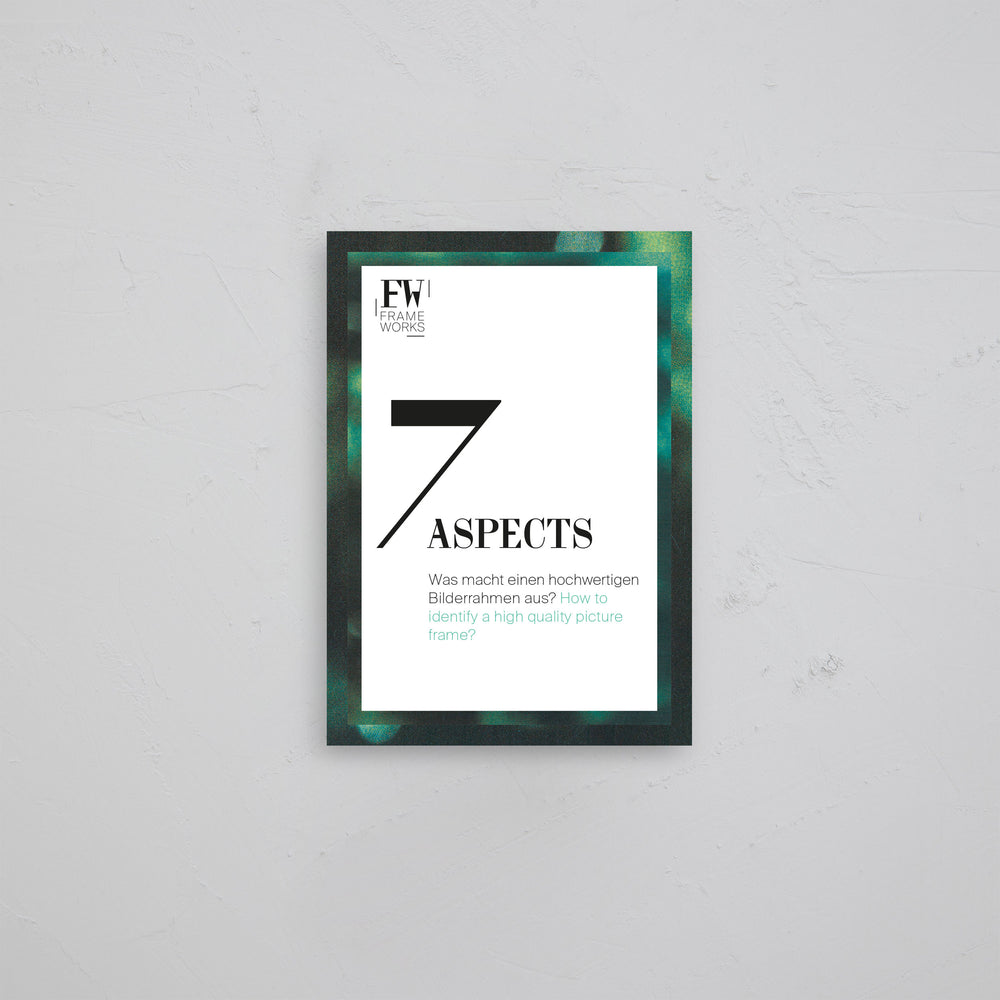
We have
7 aspects
This allows you to determine whether your artwork has been framed professionally and sustainably. Two aspects play a key role: optimal protection of your art. The concept of sustainability refers, on the one hand, to resource-efficient manufacturing and production (e.g., reusing materials like wood, conscious use of leftover materials) and, on the other, to the longevity of the product itself.
1
Crafts
Our top priority is the proper and professional workmanship of the frame materials, especially the wooden strips. This means that the corner joints are expertly reinforced with a proper joint, a spring-loaded miter. This prevents the corners from breaking apart over time. Professional workmanship also extends to the surface treatment: Paint, stain, spray paint, or gold/silver should always be applied at the corner and after the four legs have been assembled.
2
Assembly
The second priority is the mounting of the picture, which always serves to protect the art from damage, aging, and environmental influences. It is important that there is a gap between the artwork and the glass, whether through the thickness of the mat or the side spacers. In both cases, this distance prevents contact between the glass and the art. This guarantees the longevity of the framed picture.
3
Glass
The third point is the glass: It protects the art from direct external damage. However, the type of glass should guarantee additional protection. Unlike window glass, UV glass protects against harmful UV radiation, which can attack, damage, and thus alter the paper and colors over time. The level of UV protection determines the glass's transmittance.
for UV rays. The higher the value, the fewer harmful rays penetrate the art. This increases the guarantee of long-term colorfastness. Additionally, the glass should be non-reflective to prevent glare.
4
material
The fourth aspect is the type of materials used. All materials should be largely acid-free or at least not
come into contact with the art itself. Acid, which is sometimes found in simple papers and boards, can attack a work of art and the colors within it, altering them permanently through chemical processes. Permanent colorfastness and integrity can only be guaranteed with acid-free boards of museum and archival quality.
5
suspension
Fifth is the type of hanging. Whether it's a prong hanger, wire hanger, hook, or a custom solution, these should be appropriate for the size and weight of the frame to prevent it from falling off the wall. Furthermore, the correct type and number of hangers should be chosen to prevent the frame from bending. This is the only way to ensure lasting protection.
6
composition
Sixth is the overall concept of the frame and the artwork. When selecting a frame, care should be taken to ensure a harmonious picture and that the elements of style, color, and material fit together. Historically, the picture frame is not just an object that displays a work of art on the wall, but a part of the art itself.
It should not be completely withdrawn and remain in the background, but should support the art through its successful design.
7
Professional
The seventh, but actually most important, point is the decision to have the art professionally framed. Buying a work of art is a very individual decision, regardless of the motivation and value behind it. Framing the piece is the next important step in preserving and enjoying the work for the long term.


